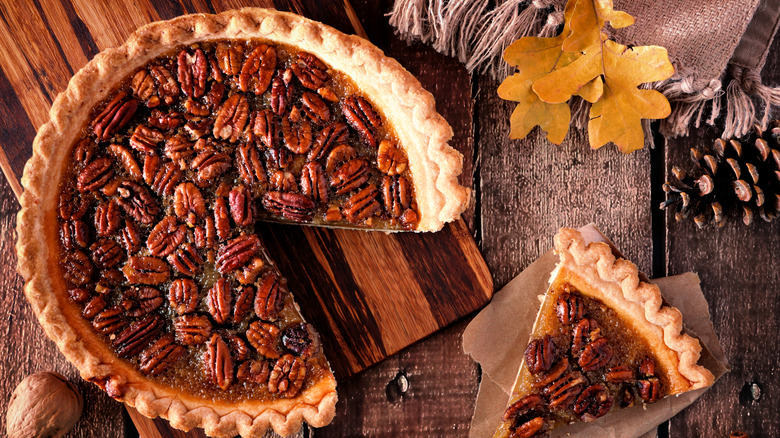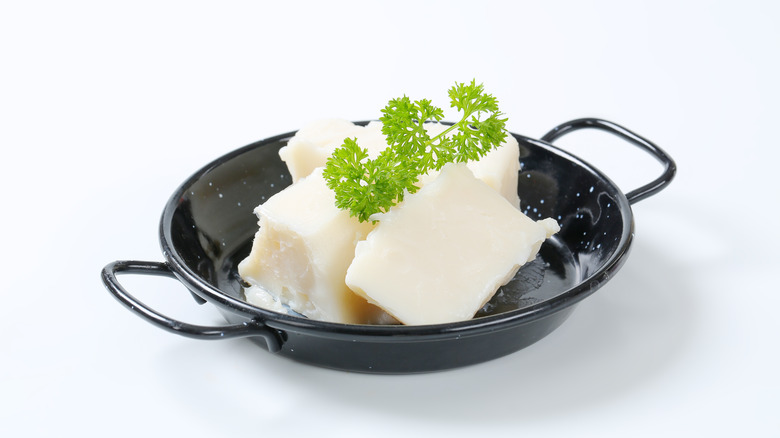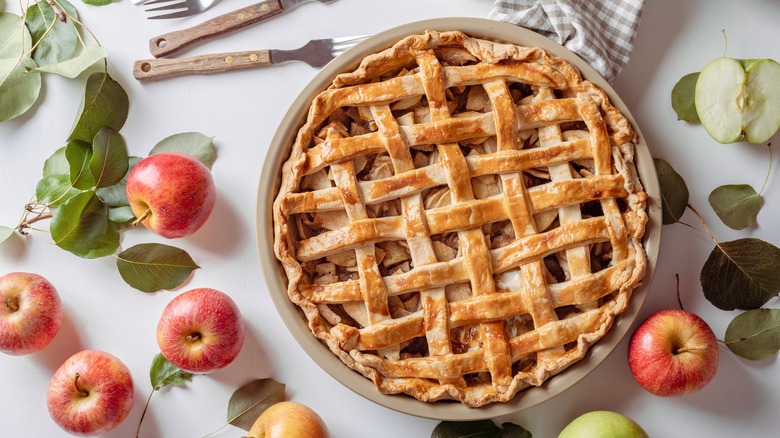Why Lard Is Such A Popular Ingredient For Pie Crusts
Saying that everything old is new again may not be really true, but it's decidedly the case that traditions are there for a reason. Traditionally, the favored baking oil was lard, or rendered pork fat — that is, until the 20th century made vegetable oils and shortenings more commercially available and lard coincidentally got dinged for being unhealthy and full of all kinds of unpleasant things like saturated fat. Once people got out of the habit of putting lard in their pie crust pastry, using it again became something of a hard sell. Well, lard is back, in a big way. Not only is it calorically similar to butter, it's actually lower in saturated fat. Even better, pie crusts made with lard are wonderfully flaky, and can also less finicky to work with than those made with butter.
Lard was hurried off the culinary stage not only by corporate oil manufacturers but also the muckraking author Upton Sinclair, who claimed that workers who fell into the rendering vats became part of the product. Luckily, celebrity chefs like 2016 Julia Child Award-winner and Mexican cooking whiz Rick Bayless are championing the stuff, listing lard as an essential ingredient. It should definitely be part of your baking pantry, particularly because of what it does for pie crusts.
Choosing the right kind of lard for your pie crust
Not all lard is created equal. Some lards actually have a bit of pork flavor which will probably be a no-go for peach pie. The stuff to use is called leaf lard. While it's still pork fat, leaf lard has a very mild taste and is preferred over all other types for baking. It's the rendered fat that surrounds the pig's kidneys, shaped like a leaf. Leaf lard is creamy, mild, and smooth — just right for pastry dough. Unsurprisingly, leaf lard is considered the highest grade and therefore the most expensive (and occasionally more difficult to find) version of the cooking fat. (Prices vary, of course, but leaf lard made from pastured pork appears to cost about one third more than butter made from grass-fed cows.)
So, what will leaf lard do for your pie crust? For starters, it's a heck of a lot easier to work with than butter, which has a much lower melting point. If your butter is too warm, it will basically melt into the pastry dough — making it more prone to tearing and shredding. Conversely, butter that is too cold won't want to incorporate into the dough or allow it to be rolled out easily. Leaf lard starts out creamy and soft and stays that way, providing both crisp crusts and the flakiest pastries.
The best of both worlds
Of course, butter is a wonderful ingredient for making flavorful, flaky pastry doughs. Not only does it taste like, well, butter, its water content evaporates during baking, helping to create delicious layers of flakiness. (Lard accomplishes flakiness another way, by virtue of its larger fat crystals, which melt and leave pockets similar to those created by steam.) When used at the right temperature, butter also makes pie crusts meltingly tender.
It seems obvious that combining butter and lard when making your next pie dough will provide the best of both worlds, and this is absolutely the case if you're looking for flakiness, tenderness, crispness, and buttery flavor. Combining butter and lard will also be a good introduction to leaf lard for the curious but cautious home baker who might not be willing to go whole hog, as it were. The other thing pretty much everyone agrees on is, no matter which fat you choose when baking, forget about shortening. Compared to leaf lard and butter, it doesn't stand a chance.


